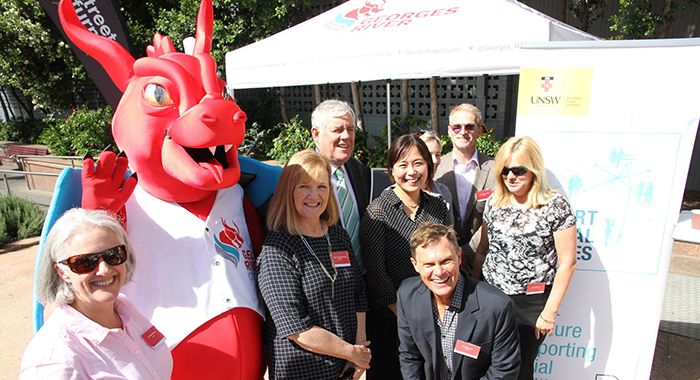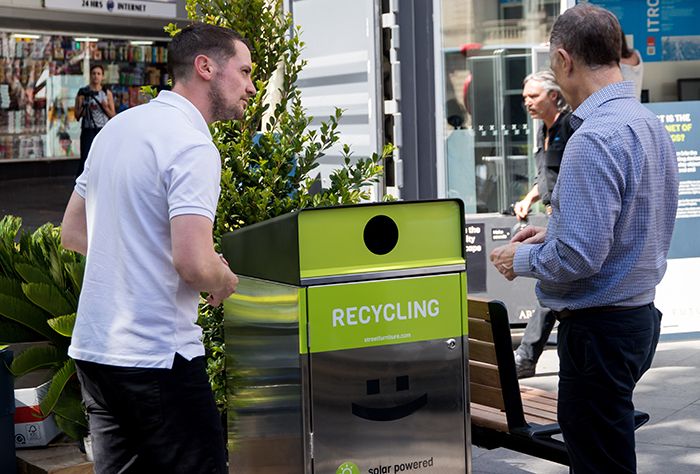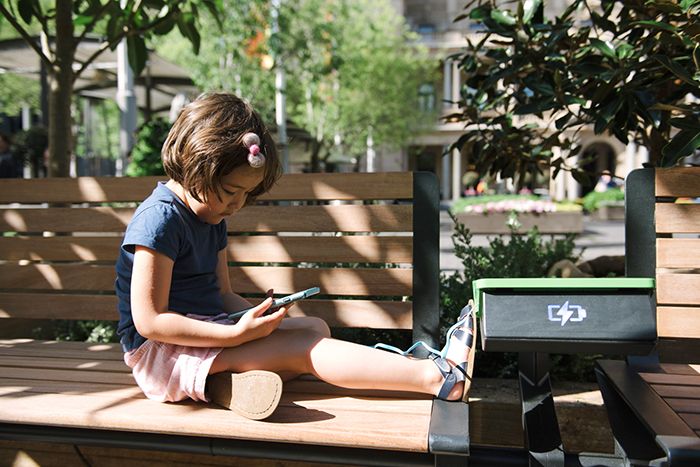
ABC Radio Sydney’s Richard Glover chats with Georges River Council Mayor Kevin Greene and Dr Nancy Marshall from UNSW about the Smart Social Spaces project.
The following is a transcript of the program, which aired on April 10, 2018.

RG. A new policy of embedding sensors in everything from barbeques to park benches. Fans say it helps Councils know what’s needed, but how do the public feel?
How often does someone sit on the bench in your local park? How often is the playground equipment used? How often does a family turn up and use the barbeque to have a picnic on a Saturday afternoon? The Georges River Council is working to find out the answer to all those questions with academics from the University of NSW, to place sensors on Council facilities in order to monitor their use. So sit down on the park bench, and a note will be made of how long you linger.
Is that Big Brother? Or is it just a good use of new technology? And how does it work? Kevin Greene is Georges River Council Mayor, and joins us here on Drive, good afternoon.
KG. Good afternoon, Richard.
RG. Tell us how it works and what you hope to achieve through it.
KG. We’ve received some funding through the Smart Cities program, and with the University of NSW, who are providing the technology, we will be able to monitor how things are being used in the public domain, so that’s parks, plazas, all those areas. So we can efficiently monitor their use, but more importantly their non-use.
So, to give an example, if a seat’s not being used is it because it’s broken? Is it because the pigeons have been sitting there and it needs a clean? Or is it because people don’t use that part of the park, and therefore we need to put the seat in a place where people will use it.
RG. Great example, rubbish bin, the sensor can tell you back at head office, it’s full, it’s overflowing, we need to go and pay it some attention.
KG. Absolutely. Or, for that matter, if someone stupidly put a match in there and all of a sudden it’s very hot in that garbage bin, and you need to get someone there very quickly.
RG. You don’t think it’s a bit Big Brother? The fact that I’m using the barbeque – you know how long for?
KG. No, I don’t think so Richard, we’re not putting your name to it. From that point of view, we’re just looking at the numbers of people, not the names of people. It’s about being able to provide efficient services for our community, and certainly Georges River Council is honoured to have been chosen as one of the lead Councils in this area.

RG. Kevin is with us from Georges River Council, just stay with us Kevin. I want to get Nancy Marshall involved, she’s Senior Lecturer in City Planning at the University of NSW and is involved in the trial. Nancy, good afternoon Richard.
NM. It’s great to be with you, Richard.
RG. Nancy, what does it look like, when I sit down on a park bench, for example, what will I see, a little camera?
NM. You will not see a camera, in fact you probably won’t see anything at all. We have a group of small, smart environmental sensors that are attached to benches or the bins, that will measure, as Mayor Greene was saying, fill levels for the bin, the weight on a seat or bench, or heat in an ash receptacle. And they’re so small, you won’t even know it’s there. For the rubbish bin, it’s inside the bin. It’s to capture the use of the environment, not details about people or any personal data. So we’re certainly not adding to that Surveillance State.
RG. So in the case of the bench it’s only my weight on the bench? Which is considerable … My weight on the bench would be received by the sensor to say, someone is using this bench.
NM. Yes. They call it a pulse or a heartbeat on a sensor, so we can measure every half hour, hour, two hours, so it will give the Council really good information about the patterns of use in that domain, or if you like, the life history or the story of that street furniture independent, of itself, in public space.
RG. Presumably we’re saying, in children’s playground, the swings are terribly popular, the slides are not so popular.
NM. Yes. Or we could measure things like sound or noise in the environment, or on a water tap we can talk about water usage, or power draw.
RG. Isn’t there – this is a technological response, isn’t the human response maybe better, to have Council officers go and have a wander through the park, they can get a sense of it, show a bit of Council presence as well?
NM. That’s one way to do it, and I’m sure Council is very effective in having an evidence-based backing to some of their decisions. But this is actually hard data so they may be able to say, look, you’re not out wandering the park at 2am, we can tell you may have a rough sleeper on this bench. Or that these swings are heavily used and you really need to keep them up to date and safe. So this is real-time data that’s evidence to Council for things like urban design and improvements, or asset management.
RG. When you say rough sleeper, that’s the point when I think, that’s a bit creepy. There’s something about the modern world that there’s not little shadows you can hide in anymore, you can’t get away with anything. The fact that somebody might sleep on a bench when no one’s looking, maybe that’s a good thing.
NM. You’d like to think that they wouldn’t need to sleep on the bench in the first place, but there are different ways that different Councils manage that kind of scenario, and some may in fact – something the City of Sydney does – it may sequester rough sleepers so that they do feel safe and have a right to the city.

RG. And that all starts with the data. Kevin Greene, how are you going to use the data, when it all comes flooding in through Nancy and her associates’ methods, how do you use this in the Council.
KG. Certainly we’ll use this for forward planning. We’re pleased to be part of the pilot programme so it will be interesting in the first instance to see what sort of data does come. We have an understanding of what possibly may come in, but most importantly we’ll be able to collect that data now, we’ll be able to use it so that there will be planning for use in parks, particularly in the centre of Hurstville, we’ve got the Hurstville Memorial Plaza, where there’s a lot of people coming through. There’s also additional facilities where you’ll be able to charge your mobile phones in places such as the middle of Hurstville.
RG. A great example, I suppose, to just put the argument in favour for a second, the barbeques in this park are being used, there’s a queue for them. The barbeques here are not being used at all, we should do something about that.
KG. Exactly, whether that’s barbeques, whether it means we need to input extra shelter sheds and preparation areas around those barbeques because there is constant use, or as Nancy indicated whether it’s the playground equipment. Whether it’s a case of, these garbage bins are continually full, do we need to have more garbage bins in that area?
RG. It is a cynical world when it comes to surveillance, we have a text, ‘this is just so the Council can provide evidence that some parks aren’t being used so they can flog them off to developers.’
KG. You can’t flog off any parks, so I’m pleased to denounce any cynical comments, because we’re about providing services in Georges River Council, and we want to see our parks used, and we want to make sure they are quality facilities for all our community.
RG. It is going to be very interesting to see what you find out in six months’ time, maybe we can talk again then, but thank you very much for your time.
KG. An absolute pleasure Richard, and many thanks to Nancy for her support of this project.
For more information about #WodenExperiment, see our StreetChat article, read the Discovery Report and follow the project on Facebook.











